In an era dominated by digital streaming and instantaneous access to millions of songs, the humble vinyl record has made a surprising and defiant comeback. Once thought to be a relic of the past, destined to gather dust in the attics of former music enthusiasts, vinyl has resurfaced with a vigor that is reshaping the music industry’s landscape. This resurgence is not just a fleeting nod to nostalgia; it represents a profound shift in how listeners value and interact with music.
The Numbers Speak Volumes
Consider this: In 2021, vinyl records outsold CDs in the United States for the first time since the 1980s, with over 27.5 million units sold, marking a nearly 30% increase from the previous year. This statistic is not just a blip on the radar but part of a consistent upward trend that has seen vinyl grow from niche to mainstream within a decade. This resurgence is a testament to vinyl’s enduring appeal and its ability to connect with both older generations who grew up with turntables and younger audiences discovering the unique pleasure of vinyl for the first time.
As we delve deeper into the reasons behind this vinyl revival, it becomes clear that the allure of records goes beyond mere sound quality. It’s about the experience, the art, and the act of listening that vinyl offers—an experience that cannot be replicated in a digital format. In the following sections, we will explore the multifaceted reasons behind vinyl’s return, its impact on the music industry, and what the future may hold for this beloved format.
The Rise in Numbers
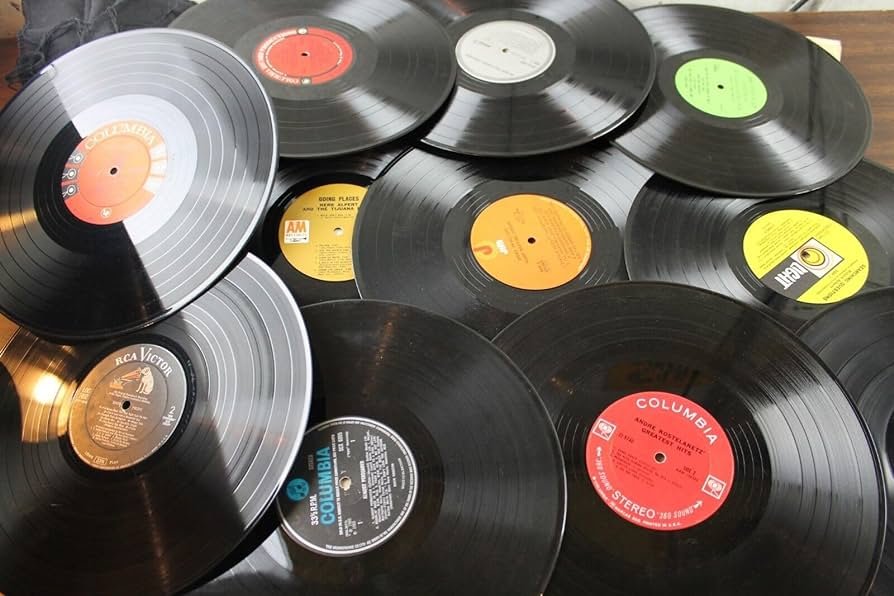
The recent resurgence of vinyl is not just anecdotal; it’s substantiated by impressive sales figures that highlight its revival and renewed popularity. According to the Recording Industry Association of America (RIAA), vinyl record sales have seen a remarkable surge, with revenues climbing to $1.2 billion in 2021, up from $479.5 million in 2019. This marks the highest revenue from vinyl records since the 1980s, signaling a significant shift in consumer music purchasing habits. In 2022, the trend continued, with vinyl sales growing by an additional 22%, demonstrating not just a revival but a robust growth trajectory that continues to defy the convenience of digital streaming.
Historical Comparison
To put these figures into perspective, it’s instructive to look back at the historical performance of vinyl. In the late 1980s, the introduction of the compact disc (CD) heralded a steep decline in vinyl sales, with revenues plummeting as consumers opted for the new digital format, which offered greater convenience and sound clarity. By the early 2000s, vinyl had become a niche market, largely sustained by DJs and hardcore collectors. However, starting around 2007, vinyl began to make a comeback, initially as a retro novelty among indie bands and their fans.
A decade later, this trend has accelerated, with vinyl eclipsing CDs in terms of revenue—a reversal of fortune that was unthinkable during the heyday of CDs in the 1990s. This historical comparison not only highlights the remarkable resurgence of vinyl but also underscores a broader cultural shift back towards physical media, which offers tangibility and a sense of ownership that digital formats cannot replicate.
Behind the Resurgence
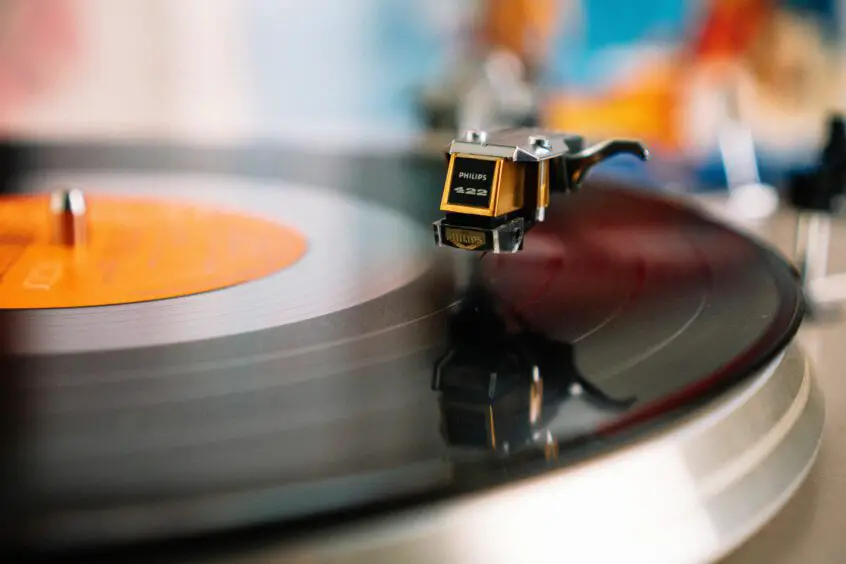
The vinyl resurgence is deeply intertwined with nostalgia, evoking memories and emotions associated with past musical eras. For baby boomers, vinyl records are a portal back to their youth, when music was not just heard but physically experienced, often through large, tactile records that demanded active engagement. This demographic appreciates vinyl for its ability to capture the essence of their formative years, providing a sense of comfort and connection to a time when music was an integral part of their identity formation.
Millennials, on the other hand, are drawn to vinyl for slightly different nostalgic reasons. For many in this generation, vinyl offers a romanticized glimpse of a time they never lived through. It’s a form of rebellion against the intangibility of digital media, a way to physically own a piece of art in a world where most cultural consumption is fleeting and ephemeral. Vinyl allows them to establish a more meaningful relationship with music and artists, connecting them to a broader cultural history.
Sound Quality
Beyond nostalgia, the resurgence of vinyl is often credited to the superior sound quality it offers over digital formats. Aficionados argue that vinyl records produce a warmer, richer, and more authentic sound. This is attributed to the analog nature of vinyl playback, which preserves the original audio waves. Digital formats, while sharper and more consistent, compress these waves into digital files, potentially losing subtle nuances in the process. Whether this difference is perceptible varies from listener to listener, but the belief contributes significantly to vinyl’s appeal.
Collectibility and Tangibility
Vinyl records are more than just music carriers; they are collectible objects d’art. The large format of vinyl allows for album covers that are often considered pieces of art worthy of display. Liner notes and inserts add to the experience, providing background stories, lyrics, and insights that enrich the listener’s connection to the music. The ritual of sliding a record out of its sleeve, placing it on the turntable, and carefully dropping the needle creates a physical interaction with music that digital formats simply cannot replicate.
Artist Support
Purchasing vinyl is also increasingly seen as a more direct way to support artists financially. In an age where streaming services often pay minimal royalties, buying a vinyl record can represent a more significant financial contribution directly to the artists and labels. For fans, this is a way to ensure their favorite musicians can continue creating music. Moreover, many artists release limited edition vinyl, special editions, or vinyl-exclusive tracks, which can increase both the desirability of the format and the financial support it provides to artists.
Together, these factors create a compelling case for why vinyl has not only returned from the brink of obscurity but has thrived in an age dominated by digital convenience. The vinyl resurgence is a multifaceted phenomenon that underscores a deeper, more tactile relationship between music fans and the art they love.
Industry Impact
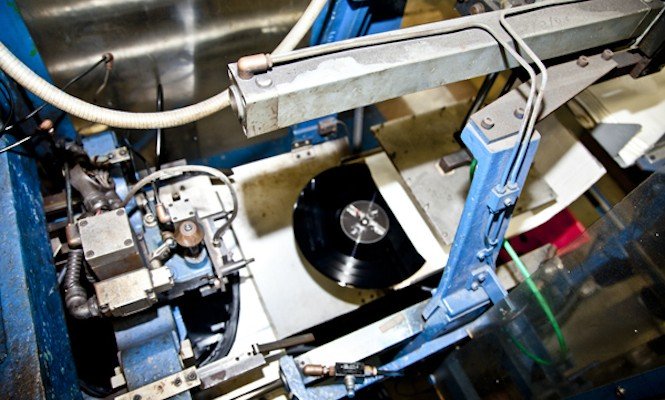
The vinyl resurgence has prompted both major and independent record labels to recalibrate their strategies. Major labels, which once sidelined vinyl production in favor of CDs and digital formats, are now expanding their vinyl release catalogs to include not only new artists but also reissues of classic albums. This dual approach helps them capitalize on the vinyl trend by appealing to both new listeners and collectors looking for nostalgic releases.
Independent labels, meanwhile, have embraced vinyl as a cornerstone of their physical sales strategy. For these labels, vinyl releases often serve as a hallmark of quality and an artistic statement, reinforcing brand identity and artist integrity. They frequently utilize limited runs and special editions to generate buzz and create a sense of urgency among buyers, which can significantly enhance direct-to-consumer sales.
Vinyl Pressing
As demand for vinyl has spiked, vinyl pressing plants have experienced both a renaissance and a strain. The number of pressing facilities, which dwindled during the 1990s and early 2000s, is limited, and many have had to invest heavily in new machines or refurbish old ones to keep up with orders. This limited capacity has led to production backlogs, with new releases sometimes facing delays of several months. While this underscores the robust demand, it also highlights the challenges of scaling an industry that relies on largely analog technology in a digital age.
Retail Trends
The retail landscape for music has been dramatically reshaped by the vinyl boom. Large music retailers have expanded their vinyl sections, dedicating prime floor space to new releases and reissues. The resurgence has also been a boon for small, independent record stores, which offer curated collections and a community hub for music lovers. These stores often host events like record release parties and live performances, which reinforce the communal aspect of vinyl culture.
Furthermore, the tactile nature of vinyl shopping—flipping through bins, examining artwork, and discussing music with knowledgeable staff—offers a shopping experience that online retailers simply cannot match. This has helped sustain and even grow the number of independent record stores, contrary to trends seen in other retail sectors where physical stores have struggled against online competition.
Consumer Insights
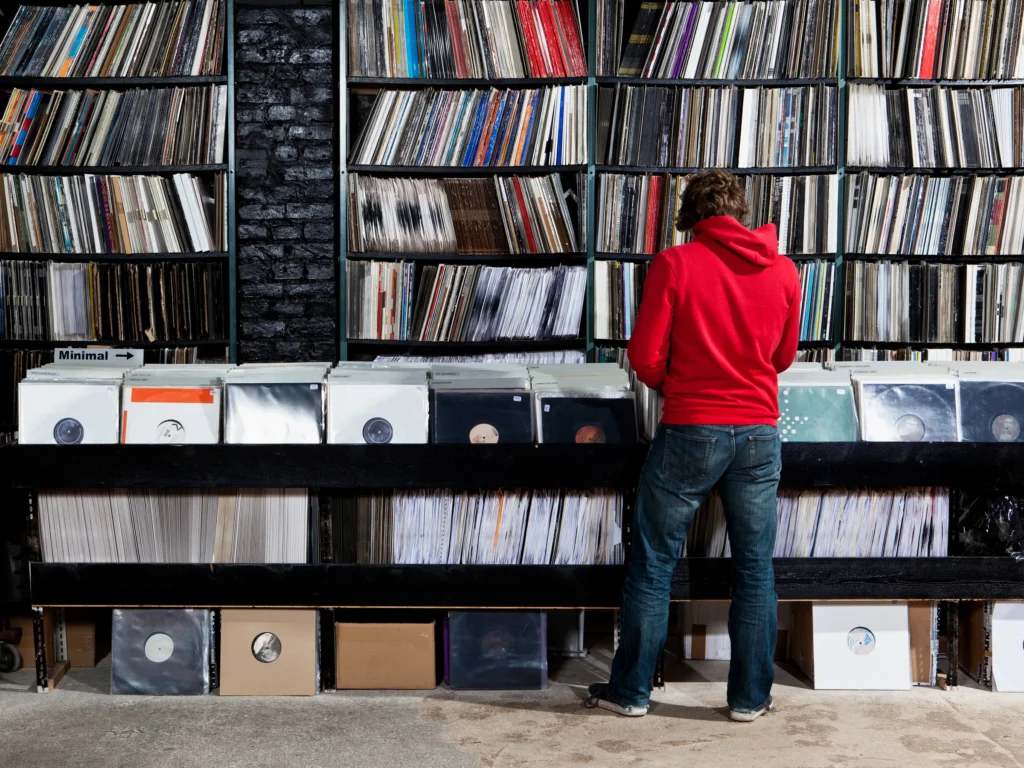
The demographic profile of vinyl consumers is diverse, reflecting a broad appeal across various age groups, genders, and geographic locations. While the resurgence initially seemed driven by older generations seeking nostalgia, data shows a significant uptake among younger demographics, particularly millennials and Gen Z. These younger listeners often discover vinyl through digital channels like social media or through vintage culture movements, and they view vinyl as a novel experience rather than a nostalgic one.
Gender-wise, the vinyl market has seen an increasing interest from both men and women, though studies indicate that male consumers may slightly edge out female in terms of purchase volume. Geographically, vinyl popularity spans across urban and rural settings, with a notable concentration in urban areas where access to record stores and live music scenes tends to be greater.
Motivations
Consumer motivations for purchasing vinyl are as varied as the demographic itself. Quality of sound is frequently cited; many vinyl buyers claim that the analog playback offers a warmer, more immersive listening experience than digital formats. However, the motivations extend beyond sound quality alone. For some, the act of collecting vinyl is a key driver, with the limited edition releases and colored vinyl being particularly coveted items.
Interviews and surveys often reveal that many consumers value the physical interaction with music that vinyl requires—inserting the record, dropping the needle, and flipping the record halfway through. This ritualistic engagement creates a listening experience that is more intentional and less susceptible to the distractions of modern multitasking lifestyles.
Community and Culture
Vinyl collecting is not just about acquiring records; it’s about being part of a community. Record fairs, vinyl clubs, and online forums thrive as spaces where enthusiasts can share their passions, exchange knowledge, and discover new music. These venues foster a sense of community and connection, reinforcing the cultural aspect of vinyl as part of a lifestyle.
Record fairs, for example, are not only marketplaces but social events where collectors of all ages meet, mingle, and bond over shared musical tastes. Clubs dedicated to vinyl enthusiasts often host listening nights, where members bring records from their own collections to play and discuss. Online forums and social media platforms offer a modern extension of this community, with members engaging in discussions about everything from equipment to the latest releases and the best vinyl deals.
The Future of Vinyl
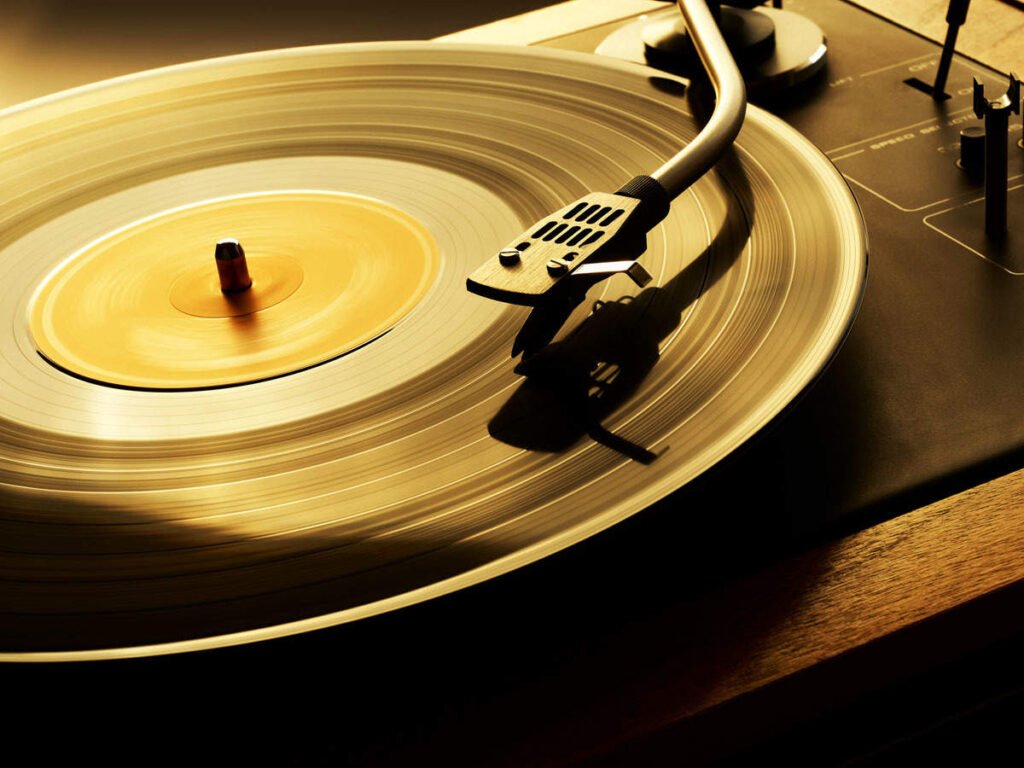
As vinyl continues its upward trajectory, the industry faces increasing scrutiny over its environmental impact. Vinyl production is resource-intensive, involving significant amounts of PVC (polyvinyl chloride), which is not biodegradable and can release harmful chemicals if not disposed of properly. This environmental footprint has prompted both consumers and manufacturers to seek more sustainable practices.
In response, some companies are exploring alternative materials such as polyethylene, which can be less harmful to produce and easier to recycle. Others are investigating the feasibility of using recycled vinyl and other more sustainable compounds to press records. Additionally, initiatives to improve the overall energy efficiency of pressing plants and to reduce packaging waste are gaining traction. These efforts are crucial in aligning the vinyl industry with broader environmental sustainability goals while addressing the concerns of environmentally conscious consumers.
Market Predictions
Experts generally agree that the vinyl market will continue to grow, albeit at a potentially more moderate pace than the explosive growth seen in the last decade. Analysts suggest that while the market may face saturation points, the continued interest in vinyl as both a collectible item and a preferred listening format will sustain its sales. Record labels are likely to keep exploiting this trend by releasing limited edition pressings and deluxe reissues to maintain consumer interest.
The integration of vinyl into popular culture and its adoption by new generations also suggest a stable future for vinyl sales. As long as there is a cultural value placed on the vinyl experience, its market is expected to remain robust. However, this growth is contingent upon the industry addressing both sustainability issues and production bottlenecks to avoid alienating a progressively eco-conscious customer base.
Technological Innovations
Technological advancements are also shaping the future of vinyl. Innovations in pressing technology promise faster production times and higher quality outputs, which could help alleviate some of the current bottlenecks in supply. For instance, new automated pressing machines that streamline the manufacturing process can potentially reduce the waiting time for new releases.
Furthermore, there are ongoing developments in improving the audio quality of vinyl records. Techniques such as high-definition vinyl, which uses laser cutting technology, aim to enhance audio fidelity and increase the amount of music that can fit on a single record without degrading sound quality. These innovations not only enhance the listener’s experience but also promise to inject new life into the format as they become more widely adopted.
Final Thoughts
The vinyl resurgence is more than a mere trend; it’s a cultural revival that bridges generations, from baby boomers to Gen Z. This comeback highlights a collective yearning for a more tangible and immersive experience with music—a stark contrast to the ephemeral nature of digital streaming. The resurgence has been driven by a mix of nostalgia, superior sound quality, the tactile joy of handling vinyl records, and a strong desire to support artists more directly.
The industry’s response has been robust, with record labels capitalizing on the trend through an array of new releases and reissues. Vinyl pressing plants, while challenged by the increased demand, are innovating and expanding, pointing to a sustainable growth trajectory. Retailers, especially independent ones, are experiencing a renaissance, buoyed by the vinyl boom that has brought new life to their businesses.
